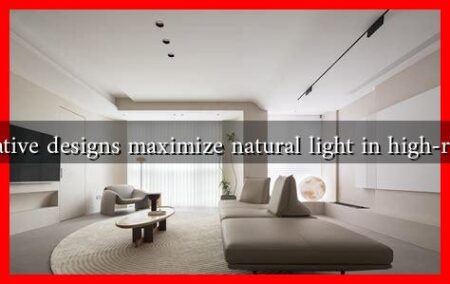-
Table of Contents
- How to Create a Multi-Functional Office Space
- Understanding the Importance of a Multi-Functional Office
- Key Elements of a Multi-Functional Office Space
- 1. Zoning
- 2. Furniture Selection
- 3. Technology Integration
- Case Study: Google’s Office Design
- Statistics Supporting Multi-Functional Spaces
- Conclusion
How to Create a Multi-Functional Office Space
In today’s fast-paced world, the traditional office setup is evolving. With the rise of remote work and flexible schedules, creating a multi-functional office space has become essential for maximizing productivity and comfort. This article will guide you through the steps to design an office that caters to various needs, whether for individual work, collaboration, or relaxation.
Understanding the Importance of a Multi-Functional Office
A multi-functional office space is not just a trend; it is a necessity in modern work environments. According to a study by the International Facility Management Association (IFMA), 68% of employees believe that a well-designed workspace enhances their productivity. Here are some reasons why creating a multi-functional office is beneficial:
- Flexibility: A versatile space can adapt to different tasks, from focused work to team meetings.
- Collaboration: Encouraging teamwork through shared spaces can lead to innovative ideas and solutions.
- Well-being: Incorporating areas for relaxation and social interaction can improve employee morale and reduce stress.
Key Elements of a Multi-Functional Office Space
To create an effective multi-functional office, consider the following elements:
1. Zoning
Divide your office into distinct zones that cater to different activities. This can include:
- Quiet Zones: Areas designated for focused work, equipped with soundproofing and minimal distractions.
- Collaboration Zones: Spaces with flexible seating arrangements and whiteboards for brainstorming sessions.
- Relaxation Zones: Comfortable areas with seating and greenery where employees can unwind.
2. Furniture Selection
Choosing the right furniture is crucial for a multi-functional office. Consider the following:
- Adjustable Desks: These allow employees to switch between sitting and standing, promoting better posture and health.
- Modular Furniture: Pieces that can be easily rearranged to suit different activities, such as movable tables and chairs.
- Comfortable Seating: Invest in ergonomic chairs and couches to enhance comfort during long working hours.
3. Technology Integration
Incorporating technology can streamline operations and enhance collaboration. Key technologies to consider include:
- Video Conferencing Tools: Equip meeting rooms with high-quality cameras and microphones for remote collaboration.
- Smart Boards: Interactive boards that facilitate brainstorming and presentations.
- Wireless Charging Stations: Convenient charging options for devices to keep the workspace clutter-free.
Case Study: Google’s Office Design
Google is renowned for its innovative office spaces that promote creativity and collaboration. Their offices feature open layouts, recreational areas, and various work zones that cater to different tasks. For instance, their “nap pods” allow employees to recharge, while collaborative spaces encourage teamwork. This design philosophy has contributed to Google consistently ranking as one of the best places to work, showcasing the effectiveness of a multi-functional office.
Statistics Supporting Multi-Functional Spaces
Research indicates that multi-functional office spaces can significantly impact employee productivity and satisfaction:
- A study by Steelcase found that 88% of employees feel more productive in a well-designed workspace.
- According to a report by Gensler, companies that invest in workplace design see a 20% increase in employee engagement.
Conclusion
Creating a multi-functional office space is essential for fostering productivity, collaboration, and employee well-being. By understanding the importance of zoning, selecting the right furniture, and integrating technology, you can design an office that meets the diverse needs of your workforce. As demonstrated by companies like Google, a well-thought-out office design can lead to higher employee satisfaction and engagement. Embrace the shift towards flexible work environments and transform your office into a space that inspires creativity and efficiency.
For more insights on office design and productivity, visit IFMA.




